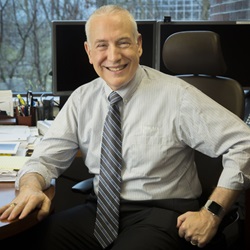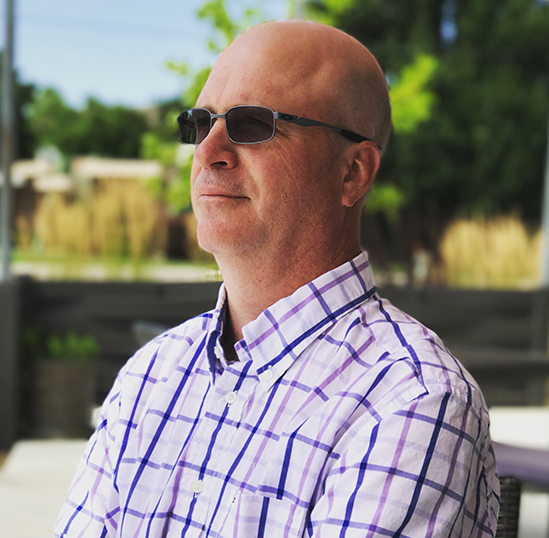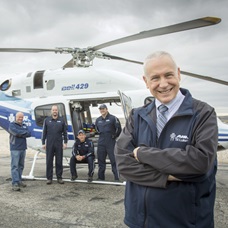Dr. Pate’s Prescription for Change
Research keeps St. Luke’s out in front – and St. Luke’s patients, in better health


I am proud of St. Luke’s Mountain States Tumor Institute (“MSTI”) for a lot of reasons. One is that because of our recognition as a leading community cancer center, we offer clinical trials that patients ordinarily would have to travel out of state to leading academic medical centers to participate in. This makes care much more convenient; patients and their families are able to avoid the time and cost associated with significant, and often frequent, travel.
Another reason I am proud of MSTI is because of the expert and compassionate care they deliver to our patients – patients like Gannon who interact with us on a daily or weekly basis. It is simply amazing to me to realize how well Gannon is doing relative to children with hemophilia when I was back in practice. Here to tell you Gannon’s story is St. Luke’s writer Chris Langrill.
- David C. Pate, M.D., J.D.
Crystal Steed’s son, Gannon, was diagnosed with hemophilia two weeks after he was born in January of 2014.
The diagnosis left Steed and her family with many more questions than answers, but almost five years later, Steed is thankful for the relationship she has developed with members of the St. Luke’s team.
Tammie Eslinger, a research manager at St. Luke’s, has played a key role in helping Steed understand hemophilia and its effects on her young son.

“Tammie and everyone else were really good about explaining things to us,” she said. “They would just work with me until I was comfortable.”
Eslinger also informed Steed of a potentially life-changing option.
“We spoke to the family about participating in a trial, and we gave them some time to think about it,” Eslinger said. “They decided, you know, OK. They didn’t know anything about hemophilia treatment, but they were interested in the science of it.”
As a result, Gannon Steed became the first patient in the world under 5 years old to receive a new drug, N9-GP. The U.S. brand name of the drug is Rebinyn.
“They took that leap of faith,” Eslinger said.
The study, activated with Novo Nordisk in May of 2014, is called Paradigm 6. It is open at 12 health-care centers in the United States, and is expected to close Oct. 30, 2022.
“Hemophilia patients don’t have the components of the blood to make clotting happen,” Eslinger said, “so when you get injured or have cuts, your blood will not stop. Most people, when a simple injury happens, within a relatively short amount of time, blood will clot and you’ll get a scab.”
The new drug that Gannon is being treated with addresses that symptom.
“Most hemophilia patients have to be infused, which means a poke, either in a central line port or in their vein, multiple times a week,” Eslinger said. “That’s just the life they lead.
“But the most appealing thing about the study they are in is the fact that it changes treatment from every other day or three times a week – or whatever the norm is for that patient’s bleeding frequency – to once a week.”
Understandably, most young patients don’t look forward to being infused.
“I’ve heard of other people having to do it every day, and the research program has been a blessing for that reason,” Steed said. “I can’t imagine having to poke him every day.”
Most importantly, the new drug is working as it should for Gannon.
“He has not had any unexpected bleeding, and he’s doing really well,” said Eslinger, who added that there have been no side effects. “It’s been an amazing success.”

That means that Gannon has been able to enjoy a relatively normal boyhood.
“He’s definitely … a little rambunctious, I guess you could say,” Steed said. “He’s just full of energy and constantly going and going and going. But he’s wonderful. People don’t even realize he has an issue.”
When Gannon was first diagnosed, the Steeds were living in Malta, near Twin Falls. About three years ago, the family moved to Malad City, which put them closer to the Utah border and Intermountain Primary Children’s Medical Center in Salt Lake City. The Steeds were given the option of transferring to Primary Children’s but decided against it.
“It’s been such a great experience I didn’t want to switch,” Steed said. “Working with Tammie, she’s been wonderful in helping us understand the research program and helping us know what we need to do. She’s just been great, and so has Dr. (Nathan) Meeker.”
Eslinger is understandably proud of the study and the work that St. Luke’s has been doing to help Gannon.
“This is such a service to the patient,” she said. “They can actually get the same treatment at St. Luke’s that other patients are getting around the world.
“Historically, patients would have to go to centers like Seattle Children’s … bigger academic centers, to be able to participate in studies like this. But with the increased emphasis on research and the growth of our program, he can come here.”
In the end, the study has been a win-win for both the Steed family and for St. Luke’s.
“It’s a testament to St. Luke’s involvement in cutting-edge treatment,” Eslinger said. “This is going to change the lives of hemophilia patients … and it just shows St. Luke’s commitment to research and to changing the face of medicine.”
About The Author

Chris Langrill is a writer and copy editor for the St. Luke’s Communications and Marketing department.

